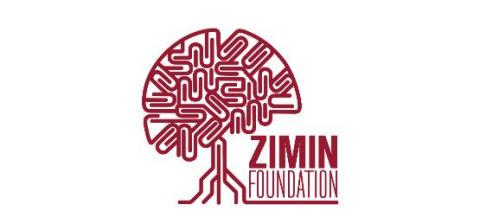Russia’s Zimin Foundation is looking to set up an additional research institute in Israel
Now the foundation is seeking to add an additional institute in Israel and one overseas, as part of a global initiative that will see, in a first stage, a total of three to four institutes set up in the coming years. “The intention is that it will be a global project,” said Mark Shmulevich, the head of the Zimin Institute program and a foundation board member in an interview with The Times of Israel. “But for now, we purposefully started with Israel. Israel is going to be not only the first country we are working with, but probably the headquarters of the initiative.”
“One year from now, we will see as many as two new institutes launched, one of them in Israel,” he said, with each institute getting some $5 million in funding over several years. The vision of the institute and the foundation is to enable research projects with academic excellence to create “a real world impact,” and to make sure that no good idea goes to waste due to lack of funding, Shmulevich said.
The Zimin Foundation was set up by Dr. Dmitry Borisovich Zimin, a Russian radio scientist, entrepreneur and the founder and honorary president of Vimpelcom, which in 1996 became the first Russian company listed on NYSE via an IPO. Zimin retired and sold his controlling stake in Vimpelcom in 2001. Since then, he has spent time on philanthropic activities, setting up the Dmitry Zimin Dynasty Foundation in 2002, which has focused its philanthropic activities in Russia. The Zimin Foundation, set up subsequently, has extended the activities to other countries.
The Zimin Foundation is financed by the Zimin Trust, made up of 90 percent of Zimin’s wealth. In 2013, Zimin become the first Russian philanthropist to be awarded the Carnegie Medal of Philanthropy. Israel was chosen as the first location to set up the first Zimin institute, Shmulevich said, because the nation has a huge share of “top level scientists that are thinking about real world applications.” It also helps that the family is Jewish.
Each institute will support multidisciplinary studies, in fields including engineering, life sciences, healthcare, and brain studies, Shmulevich said. At Tel Aviv University, carefully selected research teams have already started receiving funding for their projects. These include 11 projects, including that of Prof. Tal Dvir, whose team of researchers has created the world’s first 3D printed heart with human tissue.
Another project, that Prof. Yael Hanein of the School of Electrical Engineering and Dr. Tom Schonberg, of the Faculty of Life Sciences at TAU, seeks to combine virtual reality with sensors and machine learning algorithms to help children learn better. By tracking things like eye patterns and pupil diameters, the sensors can pick up what cues and images, fed to the users, have the greatest impact, so as to indicate how study materials should be tailored to suit their individual needs.
A third project by Prof. Jason Friedman, of the Physical Therapy department at the Sackler Faculty of Medicine, and Dr. Konstantin Sonkin seeks to improve motor skills in people with movement disorders using a new brain-computer interface which decodes brain and body signals using artificial intelligence and machine learning. “So many ideas, unfortunately, stay in the form of ideas on paper,” said Zimin’s Shmulevich. “This is where we jump in. We want to make sure we help great ideas that can help people live better lives.”
The institute is supporting multidisciplinary research since it believes that this may lead to breakthrough results with higher probability: most cutting-edge innovation results are created in the areas where several research directions meet, said Shmulevich. “Research,” he said, almost like a “team sport” and when researchers “working in different directions join efforts, the results may improve.”
There is a stage, said Shmulevich, where research enters “a valley of death” – a stage that is between the pure research and its application to real life, where it is still too early and too risky for investors to jump in. This is exactly where donors like Zimin can work with the researchers with the understanding that “within the next few years” their project will be the basis of a spin-off technology or a startup.
Success, said Shmulevich, will come when the foundation will have helped fund and generate “hundreds of projects” and out of these, some 30 will have turned into technologies, several of which will have produced “groundbreaking results.”
“Not every project will succeed, but a significant part will. One third, or one half, we will see. We hope that some of them will achieve dramatic positive results.”
Shoshanna Solomon

